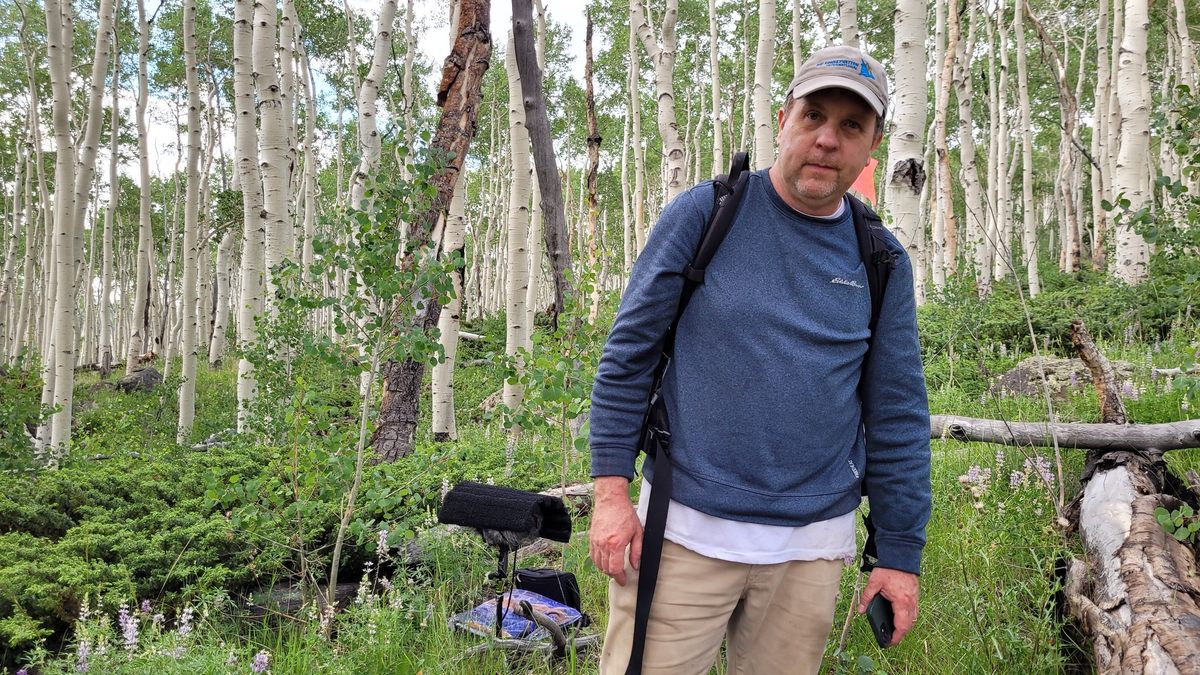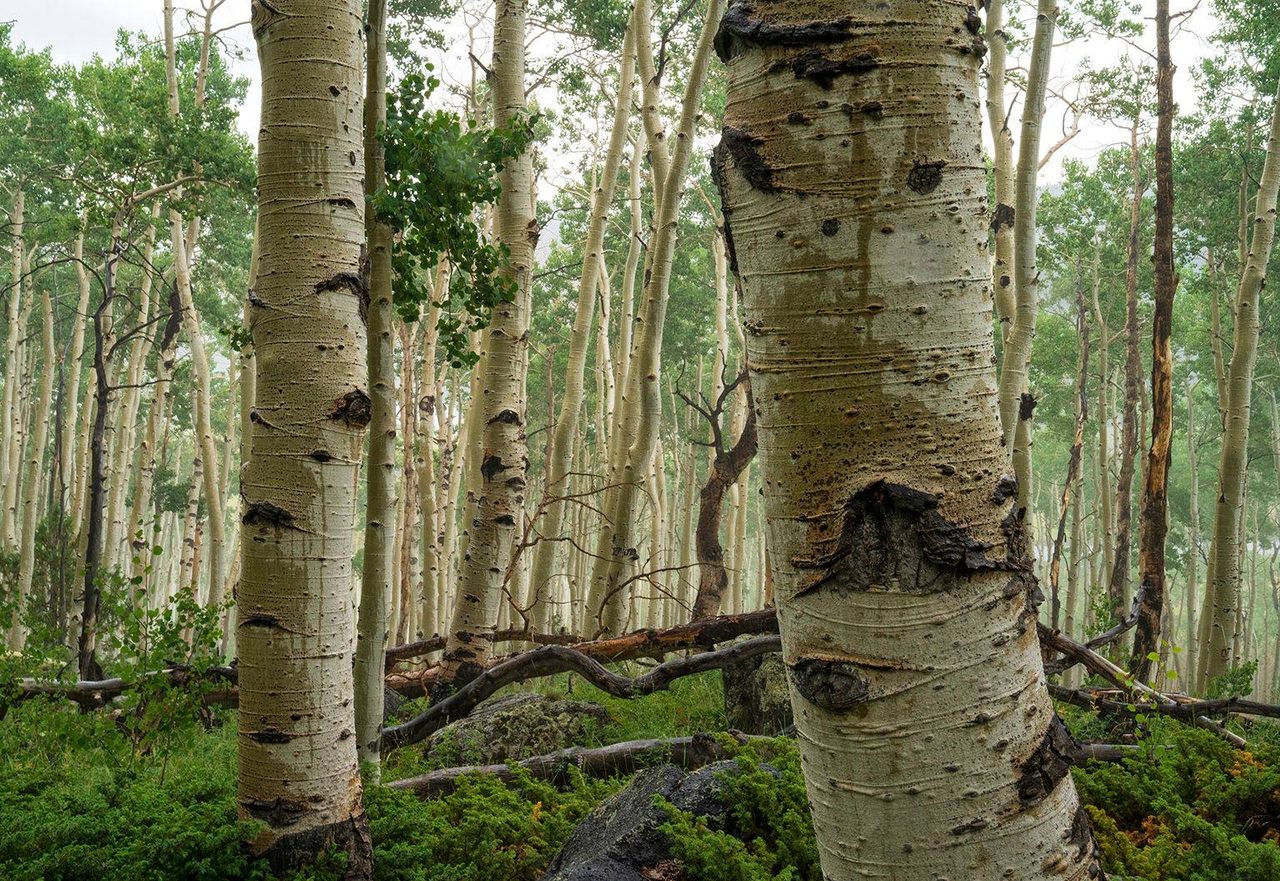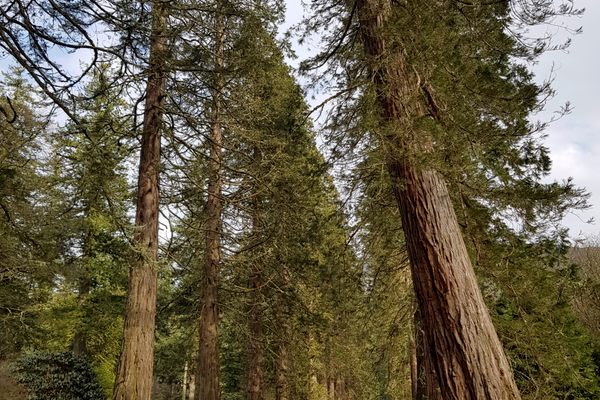New Strange Recordings Allow Us To Hear the Unseen World of Trees
Underground sounds may help save one of the largest organisms in the world.
On a hillside in Utah’s Fishlake National Forest is a tree, and if you listen very carefully, this aspen is talking to us.
This one plant actually looks like a forest of 47,000 genetically identical trees, which are effectively branches of the same organism connected by a massive root system. Each stem or ramet is a clone of the original tree, called trembling aspen (species Populus temuloides), all emanating from a single seed that sprouted over 9,000 years ago. Known as “Pando,” it is the world’s largest tree and one of the largest living organisms on the planet.
We can say the tree is talking to us thanks to the work of sound artist Jeff Rice. As artist in residence with the non-profit Friends of Pando, Rice created a body of audio work listening to and recording the innermost workings of the tree’s root system. He did this by using an array of different microphones, including stereo and ambisonic rigs for capturing soundscapes and more experimental gear like stethoscopes, contact mics, and hydrophones, which were designed for listening underwater.

The result is a beautiful, otherworldly song of the forest that invites us into the hidden world of Pando. But apart from its artistic value, the recordings present scientific possibilities that can help conserve the tree.
“Can we use sound to understand the root system?” says Lance Oditt, founder and Executive Director of Friends of Pando. “Can we use sound to transmit data through the tree by sending signals through the root system at certain points and then listening for feedback throughout the tree and using that to map the root system?”
The idea that roots are connected and transmitting things like sounds—and other communications—is something biologists are now understanding better. This is true not just for a single organism like Pando that’s already connected, but for forests of unrelated trees as well.

“Trees are connected by mycelium networks,” says David George Haskell, a biologist at Sewanee: The University of the South in Tennessee and author of Sounds Wild and Broken and The Songs of Trees. “There are some studies that show they are sharing minerals and nutrients like sugars, they may be communicating.”
This type of sharing and communication helps the survival of the whole forest. “Trees are living communities, and actually human beings are as well,” he continues. “The way that you triumph in a really competitive environment is not by going it alone as a heroic individual, but it’s by working with others.”
In the case with Pando, understanding how roots can communicate may help scientists understand what the tree is dealing with and what it needs. Oditt had previously created a 360 degree photographic project to visually map Pando, and Rice’s work adds data about the unseen side of the tree. The audio archive, with meticulously recorded dates, times, and locations, can be compared to future audio recordings to track imperceptible changes in the ecosystem above and below the land.

“The root system can be used to transmit sound and then pick that up at different points throughout Pando,” says Oditt. “That will allow us to map the root system. We know that roots are mostly water, so any variations in the acoustic profile can tell us about what’s happening down there, whether there is disease or stress.”
Oditt dismisses reports that Pando is in grave danger or even dying—in fact, he is positive about the tree’s future. Pando is a highly adaptive organism that has survived avalanches, landslides, and even a drought that lasted over three hundred years. Humans have a vital role to play in its survival, and this sound recording is another step forward.
“We can protect Pando, we can restore Pando, we can tilt the hormone balance to encourage cloning,” says Oditt. “It’s an area that has been managed by humans for thousands of years. We can become Pando’s gardeners, for lack of a better word. We need to understand soil, disease, and weather. These recordings become part of the data that will allow us to do that.”













Follow us on Twitter to get the latest on the world's hidden wonders.
Like us on Facebook to get the latest on the world's hidden wonders.
Follow us on Twitter Like us on Facebook